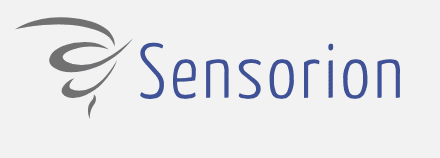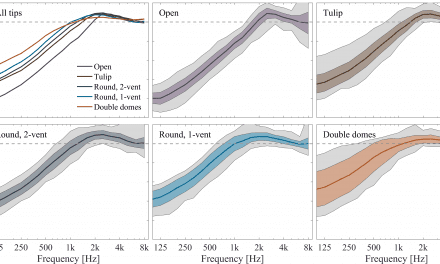A new premium product has been designed to keep up with real-world listening environments. The new hearing aid combines a sophisticated set of algorithms designed to allow the hearing aid to seamlessly and automatically react to any listening environment.
Hearing instrument users move seamlessly from one unique listening environment to another. With this idea in mind, Sonic Innovations’ Velocity 24 was designed to transition as naturally as they do. Because the new hearing instrument is fully automatic, the user is no longer required to push buttons when moving from one environment to another. Velocity 24 responds to changes in the listening environment through a hands-free Universal program in which the hearing aid seamlessly transitions among automatic and adaptive algorithms, constantly adjusting itself to maintain ideal parameters. Speech audibility and clarity are preserved, and noise is reduced through intelligent application of Velocity’s algorithms.
The Universal program has two directional algorithms running simultaneously: Automatic Switching and Focused Null Steering. These algorithms work hand-in-glove to transition between a true omnidirectional response in quiet environments, and a directional response that constantly optimizes the polar patterns in four frequency regions in noisy conditions.
The algorithms for signal-to-noise ratio (SNR) improvement and audibility are also fully automatic, making the programming of the hearing aid extremely simple. All of these algorithms engage automatically in the default setting, but they can be manually changed by the clinician:
- Gain-Dependent Expansion
- Input-based Noise Reduction (iNR)
- Automatic Directionality and Adaptive Directionality Algorithms (DIRECTIONALfocus™, FLEXIfocus™, and Focused Null Steering)
These algorithms are discussed in greater detail in this article, providing a better understanding of how they work together to create a hearing aid that transitions from one hearing environment to another as naturally as the user does.
Algorithms for Audibility and User Comfort

|

|
| This article was submitted to HR by Victor H. Bray, Jr, PhD, an audiologist and consultant, and Michael Nilsson, PhD, vice president of audiology and director of the Center for Amplification and Hearing Research for Sonic Innovations in Salt Lake City. Correspondence can be addressed to HR at or Michael Nilsson, PhD, at . | |
24-channel compression. At the heart of Velocity 24 is Sonic Sound™ technology, Sonic Innovations’ fourth-generation, multi-channel compression system, which employs 24 compression channels—all of which operate independently and in real time. This 24-channel architecture is embedded in several of the algorithms used in Velocity.
The compression technology is a proprietary design resulting from research in audio theory and a cochlear amplifier model. It is based on Sonic Innovations’ fundamental patent on signal processing design, held by two of the company’s founders. Their theory proposes that the ideal hearing aid would be based on multiple, narrow-band compression channels that operate independently and in real time. The input/output function of each of the 24 channels has four segments, with symmetrical attack and release times that vary as a function of frequency—a primary differentiator between this hearing aid and others on the market.
Velocity 24’s compression channel architecture is designed to deliver active processing across the full speech spectrum. The 24 linearly spaced channels divided into the 8000 Hz speech bandwidth yield three compression channels for every 1000 Hz, each 333 Hz wide. Yet the clinician need only manipulate controls at the 9 audiometric frequencies for full control of the 24 channels.
The “graphic equalizer” interface of the EXPRESSfit® Fitting System simplifies the programming of all 24 channels. Instead of simply “linking” adjacent channels and forcing them to the same parameters, Sonic Sound uses the powerful Accufit™ algorithm. Accufit operates behind the scenes to independently optimize each channel for correct channel-to-channel transitions for any given gain-by-frequency prescription.
Four-segment i/o function. The job of each of the 24 compressors is to restore for the listener, as nearly as possible, the perception of a normal dynamic range in each 333 Hz band. Velocity 24 accomplishes this with a four-segment input/output function across the frequency spectrum. Figure 1 illustrates the input/output function typical of one of Velocity 24’s 24 channels.
The expansion segment controls the gain applied to low-level inputs, so sounds like the hum of a refrigerator aren’t unnaturally amplified. Velocity 24 uses Gain-Dependent Expansion wherein the “Kneepoint A” in Figure 1 slides to different input levels depending on the gain prescribed in the channel. Higher prescribed gain typically results in a lower expansion kneepoint. Fixed expansion may be used instead of Gain-Dependent Expansion if the clinician chooses to do so.
Linear amplification preserves maximum audibility for soft speech. Note that a lower expansion kneepoint results in a linear function over a broader range of input levels. In Figure 1, wide dynamic range compression (WDRC) above “Kneepoint B” compensates for the reduced dynamic range typical of a sensorineural hearing loss. Finally, compression limiting controls the output of the channel to keep the level of loud inputs comfortable for the listener, while avoiding the distortion associated with saturation and clipping.
Adaptive feedback cancellation. The Adaptive Feedback Canceller uses a phase cancellation technology combined with situational feedback control, a within-channel gain manipulation technology. The two technologies work together to monitor conditions that precipitate feedback and then control the feedback without compromising the listening experience.
Adaptive Feedback Cancellation maintains stable system gain. It constantly monitors the acoustic feedback path and adjusts for subtle changes by continually updating the feedback-canceller parameters. The speed at which the canceller adapts is optimized for greatest efficiency without artifact.

|
| FIGURE 1. Three Input/Output functions demonstrating the change in the first kneepoint with changes in gain. |
Algorithms for SNR Improvement.
Noise reduction. Input-based Noise Reduction (iNR™) technology is based on a patented algorithm first brought to market in 2000. Numerous field trials have shown that Sonic Innovations’ noise reduction technology significantly helps people understand speech in the presence of steady-state background noise.
Like other Sonic Innovations algorithms, iNR is adaptive and adjusts to provide an optimal level of noise reduction based on three characteristics:
- Signal-to-noise ratio (SNR)
- Sound pressure level (SPL)
- Frequency-weighted gain requirements.
Borrowing from the previous-generation noise reduction algorithm, real-time SNR analysis is done independently in each of the 24 channels, so noise reduction is active only in the specific channels where and when noise exists.
Unique to iNR is analysis of the sound pressure level. Noise reduction is engaged if the SNR is compromised. Once it’s engaged, the input sound pressure is analyzed. If the input level in a particular channel is sufficiently high, iNR increases as the input level increases. The frequency-weighted gain requirements of iNR are driven by the audiometric profile for each patient. Previous generations of noise reduction applied fixed parameters to all frequencies. Velocity 24’s frequency-dependent iNR recognizes that greater noise reduction should be applied to frequency regions where noise is more likely to be a problem.
Advanced directional algorithms. Four directional algorithms are featured within the hearing instrument: one automatic and three adaptive. The automatic directionality algorithm continuously monitors noise levels, SNR, and the presence of wind noise—seamlessly shifting the hearing aid between omnidirectional and directional operation. In the Universal program, the hearing aid will shift to an omnidirectional polar response in quiet situations, and toward a directional polar response in noise, switching independently in up to four frequency regions. The polar response in each frequency region may not always be fully omnidirectional or directional, but is constantly adjusting between the two extremes based on the triggers in the environment. As the noise level gets higher, the polar response becomes more directional. As the SNR improves, the response goes back toward an omnidirectional configuration. This algorithm can be disengaged by the clinician and set to a fixed directional polar response or to an omnidirectional response.
Velocity 24’s three adaptive directional algorithms are designed to provide exceptional performance in noise, and they operate automatically (and can also be disengaged by the clinician). If adaptive directionality is desired, the clinician may select from one of the following:
- DIRECTIONALfocus™
- FLEXIfocus™
- Focused Null Steering
DIRECTIONALfocus is a patented adaptive directional algorithm. A predetermined focus area provides maximum amplification, with adaptive reduction in gain as sounds move out of focus. The algorithm can be set for three different focus widths in front of the listener (at 50°, 70°, and 100°). The widest focus area (100°) is used for lower-noise situations, while narrower focus areas can be selected for situations where the background noise is likely to be higher. Gain reduction is applied as sounds move out of the focus area (ie, around to the sides and back of the listener).
The FLEXIfocus algorithm brings an additional level of adaptation to DIRECTIONALfocus by adaptively changing the amount of gain reduction applied outside the focus area. It does this independently in up to four frequency regions. The polar response in each frequency region can change from a conventional directional response in quiet situations to a unique polar pattern in noise, using a 70° front beam width and adaptive gain reduction to the sides and rear.
DIRECTIONALfocus and FLEXIfocus are unique in that they use temporal cues, not intensity cues, to determine if a sound is outside the focus area. The hearing aid constantly measures the phase difference of a sound arriving at the two microphones to estimate the angle of arrival in each of the 24 channels.
Velocity 24’s Focused Null Steering uses the same angle-of-arrival cues that drive DIRECTIONALfocus and FLEXIfocus. It calculates the location of off-axis sounds to determine where the polar nulls should be located. Like FLEXIfocus, Focused Null Steering operates independently in up to four frequency regions.
Other Device Enhancements
User features. The Velocity 24 hearing aid features simple, environment-based programming with 13 common listening scenarios that automatically configure the fitting parameters for each environment. Up to four environments can be programmed into the hearing aid at one time, allowing the clinician to choose those that best fit the patient’s needs. By default, Universal is Program 1 and a Telephone environment is Program 2, but these can be changed if desired. The 13 listening environments include: Universal, Telephone, Quiet, Low Noise, High Noise, Music, Television, Restaurant, Automobile, Outdoor, Classroom, Audio Input, and Mute.
When a patient manually switches programs, Voice Alerts clearly state the name of the new environment, removing the guesswork in interpreting tone sequences. Configured by clinicians in EXPRESSfit, they are available with a male or female voice, and in a wide variety of languages. Voice Alerts can be used in conjunction with SmartTones™. These include: 1) A power-on indicator; 2) Program-change tones; 3) Volume control, with tones for volume-up, volume-down, and use gain; and 4) A low-battery warning.
Another significant enhancement for the hearing aid user is the Automatic Telephone feature. A Telephone environment (acoustic, or telecoil when present) can be assigned to any of the four program memory locations and will engage automatically when a telephone with a magnetic field is brought up to the hearing aid. The user no longer has to switch the hearing aid manually, although he/she may still do so if desired. SmartTones and/or Voice Alerts may be used to notify the listener that the program has changed to the Telephone environment. When the phone is removed from the ear, Velocity automatically returns to the previous program.
Clinician features. The 13 listening environments outlined previously make it very easy for the clinician to program the hearing aids for their patients’ unique listening needs. The default Universal and Telephone environments will likely be used for most patients, but the hearing aid gives the clinician a wide variety of programming options. Once programmed and in use by the patient, Velocity 24’s Data Logging feature provides valuable information to help the clinician fine tune the fitting or reconfigure programs for changing needs.
Data Logging is accessed through the EXPRESSfit fitting system, providing information about the patient’s acoustical environments and how the hearing aid is being used. It records the hearing aid’s average daily use, the time in each program, the time spent in different noisy environments (soft, medium and loud), and how the patient is using the volume control. The Data Logging page will advise the clinician whether or not changes are recommended and will suggest specific changes to the programming, based on actual usage.
Velocity 24 is available in a variety of models and fitting ranges, from behind-the-ear (BTE) to completely-in-the-canal (CIC) models, including a sleek miniBTE design.
In addition to the classic colors, the BTE is now available in four new colors. The CIC and Mini-Canal models are available only in the omnidirectional configuration; the ITC and ITE half-shell and full-shell models are available in both omnidirectional and directional configurations. All models are available with telecoils or with switches, and all models (except the CIC) are available with the automatic telephone feature.

|
| FIGURE 2. Mean HINT thresholds in 65 dB(A) noise for the same set of listeners measured unaided and with various Velocity products. The threshold for young, normal hearing listeners is marked with the shaded area at the bottom. |
Performance Results
A laboratory evaluation of the Velocity 24 was performed at the Center for Amplification and Hearing Research at Sonic Innovations. A total of 20 volunteers with mild-to-moderate sensorineural hearing loss wore the devices during testing in the lab, as well as in the field, to help with fine tuning and the collection of subjective opinions about the devices. Laboratory testing included speech in noise testing with the modified HINT (noise onset was increased to 5 seconds and uncorrelated noise was generated and routed to four speakers surrounding the listener to create a diffuse masker). Reception Thresholds for Sentences (RTSs) were collected in unaided, quiet, and universal environments to determine benefit from the signal processing algorithms, and absolute performance relative to normal hearing controls.
Analysis of Variance comparing RTSs for unaided, aided with quiet, and aided with Universal modes found a significant difference [F(2,38)=28.7, P <.001], with post hoc analysis finding significant differences between all conditions. Figure 2 shows performance measured unaided, and when listening to the Universal program for four tiers of the Velocity product line. Performance with young, normal-hearing listeners (audiometric thresholds of 20 dB HL or less) is also shown in the shaded area at the bottom of the graph. All data was collected aided with the same subjects and with the same materials and test environment.
The results suggest that the device is approaching normal-hearing performance in these laboratory conditions, an indication that we may be at the reasonable limits of the laboratory tests, not an indication that we are restoring normal hearing. Real-world environments change quickly and vary widely in difficulty. The laboratory condition tested is an attempt to measure benefit in one specific, difficult, well-controlled condition.
Sonic Innovations’ new Velocity 24 hearing aid is a premium product designed to keep up with real-world listening environments, allowing the user to “listen at the speed of life.” The new hearing aid combines a sophisticated set of algorithms designed to allow the hearing aid to react seamlessly in any situation, adjusting automatically as the user moves from one listening environment to another. The result is a transparent, completely hands-free, fully automatic hearing aid that provides reliable performance in a wide variety of environments. Comments from clinicians who are fitting Velocity 24 indicate that the hearing aids are extremely easy to match to patients’ needs, and patients have reported overwhelmingly positive experiences with it.
Citation for this article:
Bray VH, Nilsson M. Hearing at the speed of life. Hearing Review. 2009; 16(3):30-33.





